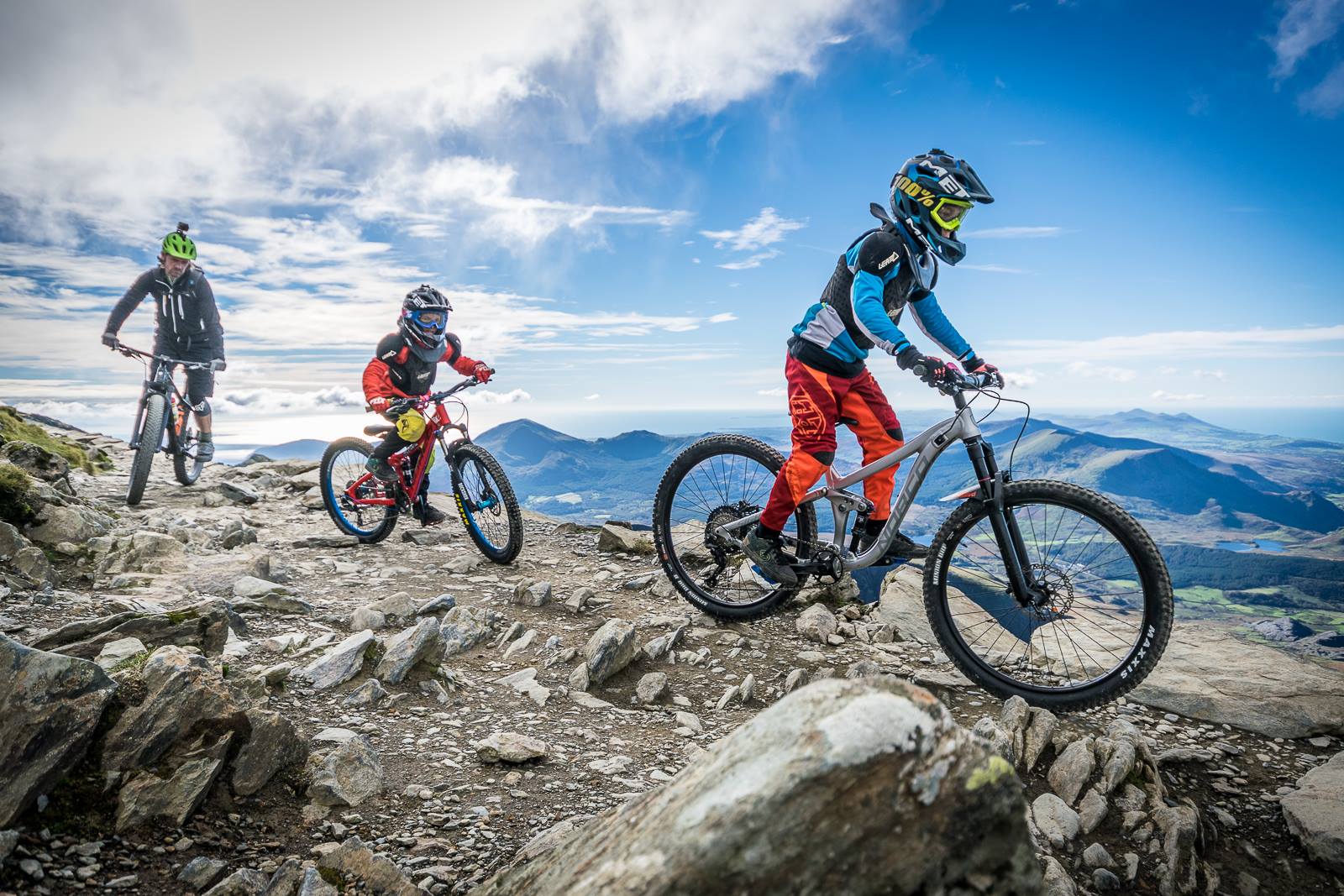How to clean your bike (post-ride).
I get asked a lot at the bike shop about bike cleaning. I suppose the customers see us working through piles of filthy bikes and assume that we’ll be doing it the best way. In some respects they’re right: we use the right solutions and lubes in the right places, and have honed our techniques to be efficient and effective. Our bikes might not always be absolutely spotless, but they’ll be clean where it matters and running smoothly.
However, there is a big compromise in the art of bike cleaning at the shop that we’re often forced to make.
On an average winter weekend, we’ll clean (and safety check) over 40 filthy bikes. They’ll be returned en-masse at the end of the day, covered in wet-mud and leaf matter which will have been forced into all the crevices of the bike. We’ll have little time to get the bikes serviced and ready for the next day before the caretaker closes up the building, and so it’s at this point that we have no choice but to use the jet-wash.
The first rule of bike cleaning is this: Never use a jetwash.
Jetwashing destroys a bike by forcing dirt and water into any gaps (bearings, bushings and seals), displacing grease, and promoting rust. Inevitably, you’ll use a jet-wash at a trail centre and so your bike will then sit on the back of the car for hours whilst you drive home, with water sloshing around in its innards, helping the bike to deteriorate right from the off!
This begs the question: if jet-washing is so harmful to bikes then why do the trail centres provide jet-wash machines? There are 2 main reasons: Convenience and safety.
Everybody wants a clean bike to take home in or on the car. It saves messing up the vehicle which, I’ve found from personal experience, keeps the owner of the car happy. It also means you don’t have to clean the bike when you get home – it takes real dedication to clean your bike after a day’s riding and a long journey home, especially if there’s a nice cup of tea waiting.
Another, arguably more important, reason is that of plant safety – the prevention of the spread of diseases between forests. The current furore surrounds Ash die-back, but this is only the latest in a line of diseases which have been spreading across the country killing trees. By cleaning leaf litter and mud from your bike it’s helping to reduce the chances of cross contamination.
So, if you shouldn’t use a bike wash then what should you do?
Well, after riding dry dusty trails it makes better sense just to brush dirt off the bike. On wet and muddy trails a bucket of soapy water and a brush/sponge is better.
More important than actually washing the bike is cleaning and lubricating the moving parts. If you don’t clean your bike (and there’s a reasonable argument for a protective layer of dirt), then you should at least do this:
Clean the chain with degreaser and a rag. GT85 is a reasonable option if you don’t have degreaser. Put the chain in the hardest gear (i.e. so it sits as far away from the bike as possible) and spray downwards onto the lowest point of the chain as you pedal. Wipe the chain clean, flexing it as you do to expose the innards.
Apply lube at the same point and keep pedalling to ensure the lube works it’s way into the internals of the chain. Wipe off any excess lube. What lube should you use? Dry lube in summer, and wet lube in winter. Wet lube is thicker than dry lube and so is less likely to get washed off. The drawback with wet lube is that it will attract more dirt than dry lube, so it’s even more important in the winter to ensure that your drive chain gets a good clean.
Next, clean the jockey wheels in the rear mech.There’s little point cleaning the chain if you allow dirt from the mech to be passed straight back onto it. You might clean any grime from the chainrings and cassette too – a flat bladed screwdriver works well for this.
Lube the derailleur pivots (front and rear derailleurs) and move the derailleurs through their range of movement to ensure the lube gets into the pivots. On the rear derailleur the movement can be achieved by pushing with the hand. For the front derailleur you’ll need to use the shifters.
Clean and lube the suspension stanchions. Use silicone spray – not GT85 or other solvent based lubricants as these will damage the suspension seals. Spray, pump the suspension, wipe clean, pump, wipe clean. What you’re aiming for is a spotless stanchion after pumping. A thin piece of cloth is best for cleaning – you can wrap it around the stanchion.
And that’s about it. 10 minutes work – a clean and useable bike!












